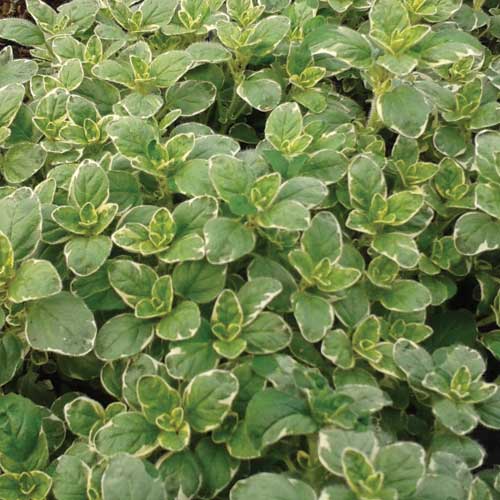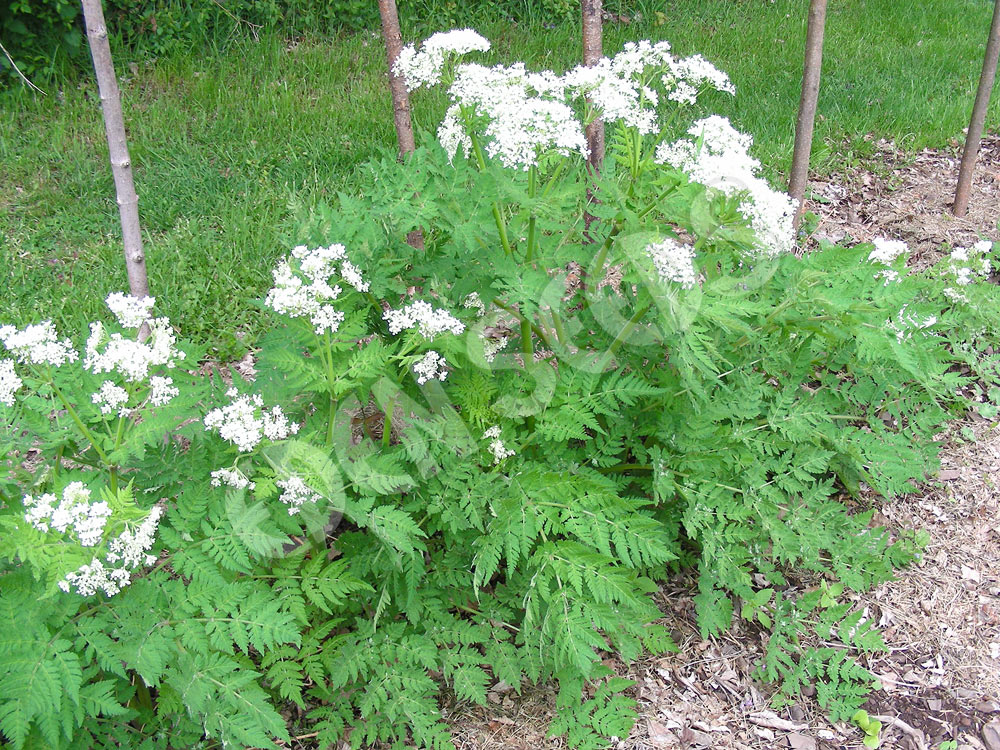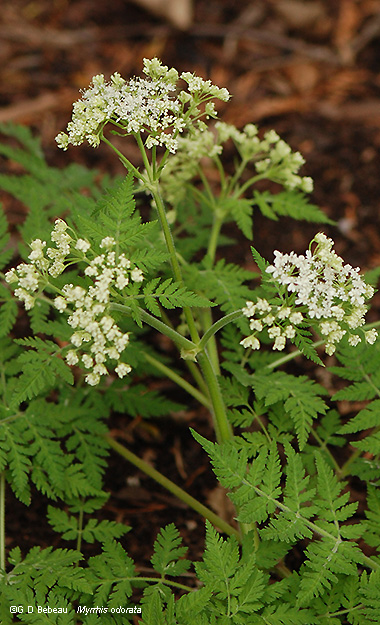Oregano Vulgare, Valerian, Swiss Mint, Sweet Cicley & Vietnamese Coriander
Today is Sunday and I was anxious to see if the herb stall was at the local farmer's market. Its a nice and sunny day with moderate temperature. I still have space for 6 plants in my indoor plant containers thats I finished making last week and have been waiting patiently to buy some more herbs. Fortunately the man was there and he also had Valerian plants which I've been looking to buy since last spring. Unfortunately the Valerian plant I bought last time did not survive the transport to Syros so I prefer to grow it here this time and collect seeds.
I bought some nice varieties to add to my collection and I think that if the majority of the plants survive the transplant at Papouri the garden will have a pretty decent mix of herbal plants.
OREGANO COUNTRY CREAM
Origanum Vulgare "country cream"
Oregano is a perennial herb, growing from 20–80 cm (7.9–31.5 in) tall, with opposite leaves 1–4 cm (0.39–1.57 in) long. The flowers are purple, 3–4 mm (0.12–0.16 in) long, produced in erect spikes. It is sometimes called wild marjoram, and its close relative, O. majorana, is known as sweet marjoram.


Cultivation
Grow in a any well-drained (preferably alkaline) soil, in full sun or partial shade
Propagation
Propagate by seed or by division in the autumn or spring
Suggested planting locations and garden types
Flower borders and beds City & Courtyard Gardens Cottage & Informal Garden Mediterranean Climate Plants Wildflower meadow Wildlife Gardens
VALERIAN
Valeriana officinalis



SWISS MINT
Mentha spicata "Swiss"
Spearmint, also known as garden mint, common mint, lamb mint and mackerel mint,[5][6] is a species of mint, Mentha spicata, native to Europe and southern temperate Asia, extending from Ireland in the west to southern China in the east. It is naturalized in many other temperate parts of the world, including northern and southern Africa, North America and South America.[7][8] It is used as a flavouring in food and herbal teas. The aromatic oil, called oil of spearmint, is also used as a flavouring and sometimes as a scent.


SWEET CICLEY
Myrrhis odorata
Myrrhis odorata, with common names cicely (/ˈsɪsəli/), sweet cicely,[2] myrrh, garden myrrh, and sweet chervil,[3] is a herbaceous perennial plant belonging to the celery family Apiaceae. It is one of two accepted species in the genus Myrrhis.[1][4]


VIETNAMESE CORIANDER
Persicaria odorata


I bought some nice varieties to add to my collection and I think that if the majority of the plants survive the transplant at Papouri the garden will have a pretty decent mix of herbal plants.
OREGANO COUNTRY CREAM
Origanum Vulgare "country cream"
Oregano is a perennial herb, growing from 20–80 cm (7.9–31.5 in) tall, with opposite leaves 1–4 cm (0.39–1.57 in) long. The flowers are purple, 3–4 mm (0.12–0.16 in) long, produced in erect spikes. It is sometimes called wild marjoram, and its close relative, O. majorana, is known as sweet marjoram.

Many subspecies and strains of oregano have been developed by humans over centuries for their unique flavours or other characteristics. Tastes range from spicy or astringent to more complicated and sweet. Simple oregano sold in garden stores as Origanum vulgare may have a bland taste and larger, less-dense leaves, and is not considered the best for culinary use, with a taste less remarkable and pungent. It can pollinate other more sophisticated strains, but the offspring are rarely better in quality.
The related species, Origanum onites (Greece, Turkey) and O. syriacum (West Asia), have similar flavours. A closely related plant is marjoram from Turkey, which differs significantly in taste though, because phenolic compounds are missing from its essential oil. Some varieties show a flavour intermediate between oregano and marjoram.

Cultivation
Grow in a any well-drained (preferably alkaline) soil, in full sun or partial shade
Propagation
Propagate by seed or by division in the autumn or spring
Suggested planting locations and garden types
Flower borders and beds City & Courtyard Gardens Cottage & Informal Garden Mediterranean Climate Plants Wildflower meadow Wildlife Gardens
Accepted subspecies:[9]
- O. v. subsp. glandulosum (Desf.) Ietsw. - Tunisia, Algeria
- O. v. subsp. gracile (K.Koch) Ietsw. (= O. tyttanthum) has glossy green leaves and pink flowers. It grows well in pots or containers, and is more often grown for added ornamental value than other oregano. The flavor is pungent and spicy.[10] - Central Asia, Iran, India, Turkey, Afghanistan, Pakistan.
- O. v. subsp. hirtum (Link) Ietsw. - (Italian oregano, Greek oregano) is a common source of cultivars with a different aroma[10] from those of O. v. gracile. Growth is vigorous and very hardy, with darker green, slightly hairy foliage. Generally, it is considered the best all-purpose culinary subspecies. - Greece, Balkans, Turkey, Cyprus
- O. v. subsp. virens (Hoffmanns. & Link) Ietsw. - Morocco, Spain, Portugal, Balearic Islands, Canary Islands, Azores, Madeira
- O. v. subsp. viridulum (Martrin-Donos) Nyman - widespread from Corsica to Nepal
- O. v. subsp. vulgare - widespread across Europe + Asia from Ireland to China; naturalized in North America + Venezuela
Example cultivars of oregano include:
- 'Aureum' – Golden foliage (greener if grown in shade), mild taste: It has gained the Royal Horticultural Society's Award of Garden Merit.[11]
- 'Greek Kaliteri' – O. v. subsp. hirtum strains/landraces, small, hardy, dark, compact, thick, silvery-haired leaves, usually with purple undersides, excellent reputation for flavor and pungency, as well as medicinal uses, strong, archetypal oregano flavor (Greek kaliteri: the best)
- 'Hot & Spicy' – O. v. subsp. hirtum strain
- 'Nana' – dwarf cultivar
Cultivars traded as Italian, Sicilian, etc. are usually hardy sweet marjoram (O. ×majoricum), a hybrid between the southern Adriatic O. v. subsp. hirtum and sweet marjoram (O. majorana). They have a reputation for sweet and spicy tones, with little bitterness, and are prized for their flavor and compatibility with various recipes and sauces.
VALERIAN
Valeriana officinalis
Valerian (Valeriana officinalis, Caprifoliaceae) is a perennial flowering plant native to Europe and Asia.[1] In the summer when the mature plant may have a height of 1.5 metres (5 ft), it bears sweetly scented pink or white flowers that attract many fly species, especially hoverflies of the genus Eristalis.[2] It is consumed as food by the larvae of some Lepidoptera (butterfly and moth) species, including the grey pug.
Crude extract of valerian root may have sedative and anxiolytic effects, and is commonly sold in dietary supplement capsules to promote sleep.


The chief constituent of valerian is a yellowish-green to brownish-yellow oil present in the dried root, varying in content from 0.5 to 2.0%. This variation in quantity may be determined by location; a dry, stony soil yields a root richer in oil than moist, fertile soil.[20] The volatile oils that form the active ingredient are pungent, somewhat reminiscent of well-matured cheese. Though some people remain partial to the earthy scent, some find it unpleasant, comparing the odor to that of unwashed feet.

SWISS MINT
Mentha spicata "Swiss"
Spearmint, also known as garden mint, common mint, lamb mint and mackerel mint,[5][6] is a species of mint, Mentha spicata, native to Europe and southern temperate Asia, extending from Ireland in the west to southern China in the east. It is naturalized in many other temperate parts of the world, including northern and southern Africa, North America and South America.[7][8] It is used as a flavouring in food and herbal teas. The aromatic oil, called oil of spearmint, is also used as a flavouring and sometimes as a scent.

Spearmint grows well in nearly all temperate climates. Gardeners often grow it in pots or planters due to its invasive, spreading rhizomes.
Spearmint leaves can be used fresh, dried, or frozen. They can also be preserved in salt, sugar, sugar syrup, alcohol, or oil. The leaves lose their aromatic appeal after the plant flowers. It can be dried by cutting just before, or right (at peak) as the flowers open, about one-half to three-quarters the way down the stalk (leaving smaller shoots room to grow). Some dispute exists as to what drying method works best; some prefer different materials (such as plastic or cloth) and different lighting conditions (such as darkness or sunlight).

SWEET CICLEY
Myrrhis odorata
Myrrhis odorata, with common names cicely (/ˈsɪsəli/), sweet cicely,[2] myrrh, garden myrrh, and sweet chervil,[3] is a herbaceous perennial plant belonging to the celery family Apiaceae. It is one of two accepted species in the genus Myrrhis.[1][4]

In fertile soils it grows readily from seed, and may be increased by division in spring or autumn.[12]
Its leaves are sometimes used as a herb, either raw or cooked, with a rather strong taste reminiscent of anise. The roots and seeds also are edible. Additionally, it has a history of use as a medicinal herb.[5]
Like its relatives anise, fennel, and caraway, it can also be used to flavour akvavit.[13] Its essential oils are dominated by anethole.[14]

VIETNAMESE CORIANDER
Persicaria odorata
Persicaria odorata, known as rau răm or Vietnamese coriander, is a herb whose leaves are used in Southeast Asian cooking. Other names for this herb include Vietnamese mint, Vietnamese cilantro, hot mint, laksa leaf, and praew leaf.
Vietnamese coriander is not related to the mints, nor is it in the mint family Lamiaceae, but its general appearance and fragrance are reminiscent of them. Persicaria is in the family Polygonaceae, collectively known as "smartweeds" or "pinkweeds".

The Vietnamese coriander is a perennial plant that grows best in tropical and subtropical zones in warm and damp conditions. In advantageous conditions, it can grow up to 15–30 cm (5.9–11.8 in). The top of its leaf is dark green, with chestnut-colored spots, while the leaf's bottom is burgundy red. The stem is jointed at each leaf. In Vietnam, it can be cultivated or found in the wild. It can grow very well outside in summer in nontropical Europe. It prefers full sun and well-drained soil. It should be brought inside for winter and treated as a house plant. It rarely flowers outside the tropics.
Σχόλια
Δημοσίευση σχολίου